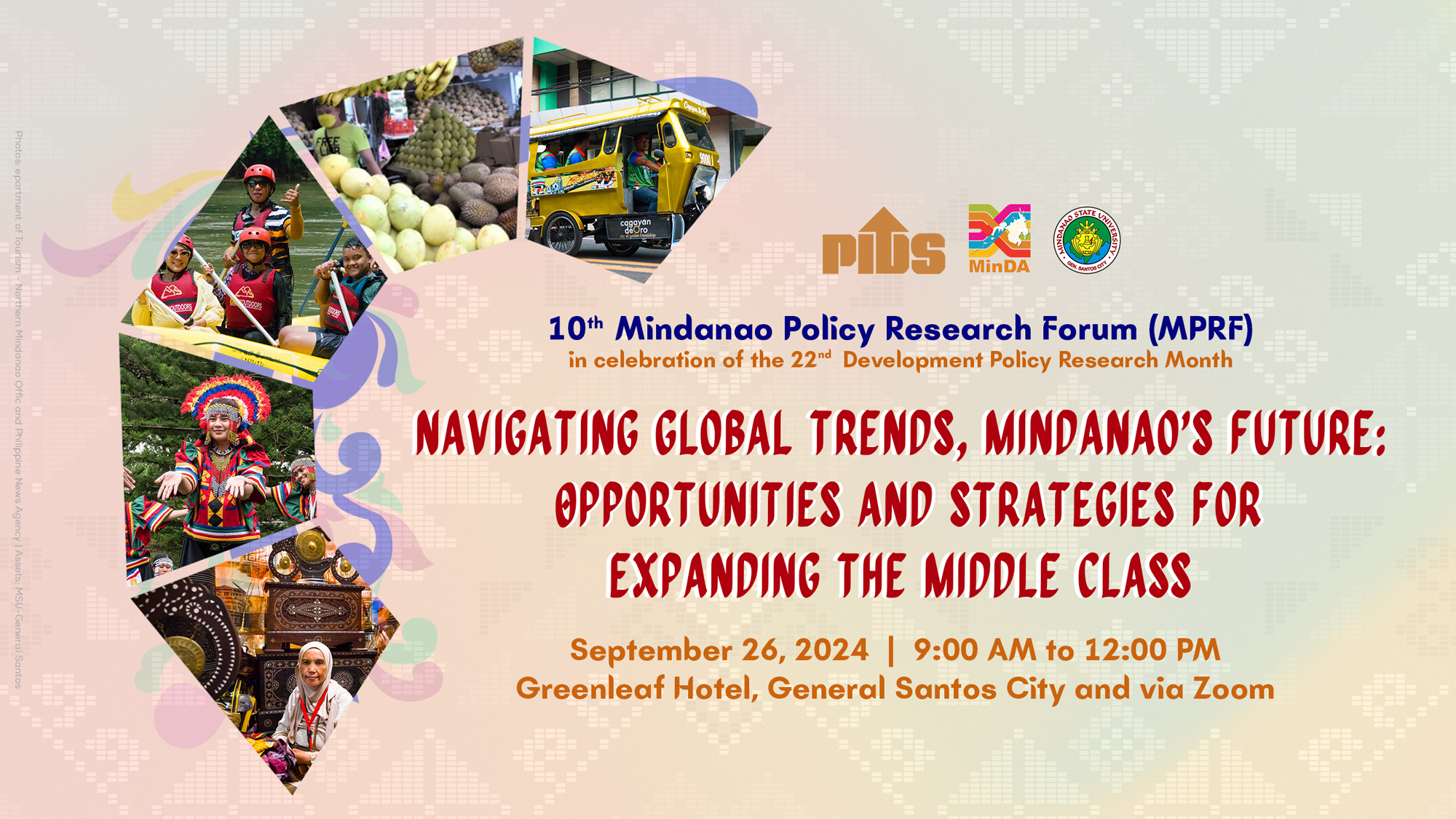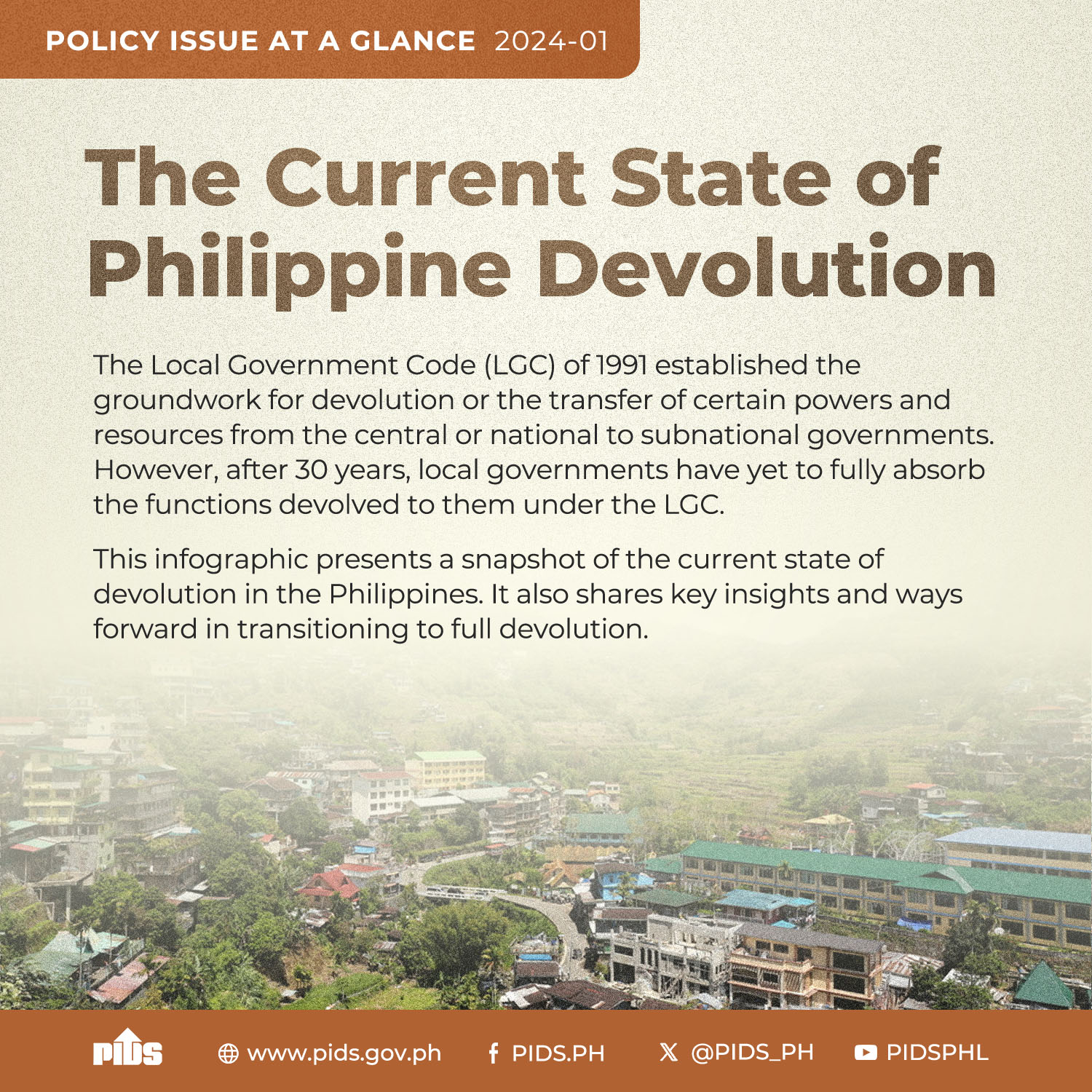The Philippines can realistically pursue virus suppression as a policy goal, a preliminary report published by the Philippine Institute for Development Studies (PIDS) said, noting that policymakers can begin to think ahead and assess scenarios of possible futures.
The discussion paper – Reset and rebuild for a better Philippines in the post-pandemic world – said based on current knowledge, the probability of achieving herd immunity from the coronavirus disease 2019 (COVID-19) has become smaller given the emergence of the highly transmissible variant of the virus, the Delta variant, and the continuing mutations.
“Widespread vaccination is nevertheless the primary policy instrument for suppressing the spread of the virus. Suppression is now the more realistic goal rather than a ‘COVID-zero’ policy or virus elimination that was effectively deployed in a few countries before the seriousness of virus mutation into highly transmissible variants came to light,” the report, authored by senior research fellows Adoracion Navarro, Maria Margarita Gonzales and Kris Francisco, said.
In the Philippines, the discussion paper noted widespread vaccination plus policies to suppress the spread of the virus – such as mandating better ventilation, shifting risky physical activities outdoors, masking, physical distancing, rapid and more affordable testing, better contact tracing, effective and more affordable treatment, and various forms of social support (including assistance that will allow infected people to isolate themselves) – as the best strategies for working toward a post-pandemic world.
“Based on scientific consensus, the pandemic will eventually end and the virus will be endemic in certain populations or areas rather than affecting the whole world. However, it is not certain when exactly this will happen,” the report said.
It added that government can convene multidisciplinary and interdisciplinary experts to do foresight analysis and think of alternative futures for the Philippines, given current knowledge and assessment of pathways of important factors affecting the country’s post-pandemic recovery.
“Planned strategies by the Philippine government can be stress-tested against the scenarios it can formulate and those for the global environment that various experts are continuously updating,” it said.
According to the report, in the immediate term the Philippines should use available tools to monitor suppression success indicators at the level of local government units (LGUs).
“The Philippines already has the tools for monitoring basic indicators, such as basic reproduction number, testing positivity rate, contact-tracing ratio, health system capacity, and vaccination rates,” it said.
“Tracking and reporting these must be consistently done by LGUs. Predicting new infections and assessing the risks of outbreaks can be improved if the national government can support the LGUs in these measures,” it added.
Meanwhile, the discussion paper said preparations should already be underway in handling the medium- to long-term challenges in a post-pandemic environment.
“Preparations should include the management of health-related factors and the economic and social consequences of the pandemic. Moreover, opportunities for recovery in stakeholder capitalism, green new deals, and workforce development should be identified and seized,” it said.
The report also pointed out the country needs to invest heavily in reskilling and upskilling programs, especially in skills crucial for the future, specifically, problem-solving, self-management, working with people, and technology use and development.
“The social protection system also needs to be revamped to cover the growing employment in the gig economy and to strengthen the health support programs. The Philippines must also improve digital readiness and address the digital divide through government policies and public and private investments,” it said.
“The workers of the future must also be included in government interventions, which can be through such strategies as improving teachers’ digital competencies, incorporating digital skills in student curriculums, and providing needed materials to both students and teachers,” it added.












